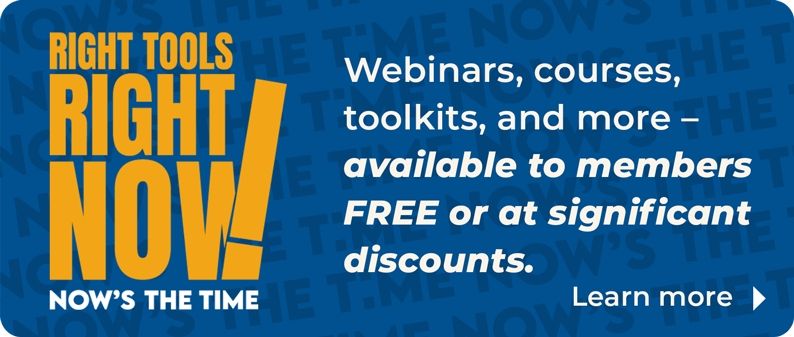References
NAR Library & Archives has already done the research for you. References (formerly Field Guides) offer links to articles, eBooks, websites, statistics, and more to provide a comprehensive overview of perspectives. EBSCO articles (E) are available only to NAR members and require the member's nar.realtor login.
What Are Animal Feedlots?
“Animal Feeding Operations (AFOs) are agricultural operations where animals are kept and raised in confined situations. An AFO is a lot or facility (other than an aquatic animal production facility) where the following conditions are met:
- animals have been, are, or will be stabled or confined and fed or maintained for a total of 45 days or more in any 12-month period, and
- crops, vegetation, forage growth, or post-harvest residues are not sustained in the normal growing season over any portion of the lot or facility.”
Source: Animal Feeding Operations (AFOs) (U. S. Environmental Protection Agency, July 23, 2021)
Federal Resources
Animal Feeding Operations (AFOs) (U. S. Environmental Protection Agency, July 23, 2021)
The Environmental Protection Agency’s landing page for resources on Animal Feeding Operations, with links to topic pages on Regulations and Guidance, Compendium on State Permits and Programs, and Outreach and Education.
Regulatory Definitions of Large CAFOs, Medium CAFOs, and Small CAFOs (U. S. Environmental Protection Agency, Aug. 2015)
This factsheet defines a large, medium, and small concentrated animal feeding operation (CAFO) across different animal sectors.
NPDES Permit Writers' Manual for Concentrated Animal Feeding Operations (U.S. Environmental Protection Agency, Feb. 2012)
“This manual is designed to provide general information on the Clean Water Act (CWA) and NPDES requirements for CAFOs, explain CAFO permitting, and provide technical information to understand options for nutrients management planning.”
Effects on Real Estate
Hog Barns and Neighboring House Prices: Anticipation and Post-Establishment Impacts (American Journal of Agricultural Economics, May 2021) E
“House prices fall by 6.2% up to three years prior to barn establishment, consistent with market anticipation of the future location of hog barns. Accounting for anticipation increases the post-establishment discount to 8%, suggesting that ignoring anticipation of new barn establishment biases estimated post-establishment impacts downwards.”
Animal Feeding Operations and Housing Values: Summary of Literature (University of Missouri Extension, May 2021)
“The presence or proposed development of an animal feeding operation (AFO) often raises the question of its impact on nearby house values. Determining that impact requires the merging of conventional housing appraisal techniques with advanced econometric studies. This guide summarizes economic studies about the effect of AFOs on housing values.”
The Effect of CAFOs on Neighboring House and Land Values (Midwest Environmental Advocates, Spring 2020)
“According to a multitude of studies conducted since the late 1980s, the construction of a CAFO lowers the home and land values around it. A 2015 publication found that properties located within three miles of a CAFO lose up to 26% of their value and neighboring houses, those within .25 miles, lose up to 88%.2 In fact, it is estimated that CAFOs around the United States have reduced property values by twenty-six billion dollars as of 2008.”
The Impact of Confined Animal Feeding Operations on Agricultural Land Values in Kansas (Kansas State University, 2019)
“Using agricultural land parcel sales data from the Kansas Department of Revenue Division of Property Valuation between the years of 2011 and 2017 and CAFO data provided by the Kansas Department of Agriculture, this study attempts to determine if a meaningful relationship exists between the sales price of Kansas agricultural parcels and the number of CAFOs within a given distance. This study found a positive relationship between the price per acre of agricultural landsales and CAFOs within 25 miles of the parcel sale on average between the years of 2011 and 2017, and a negative relationship between the sales price per acre of agricultural land and the number of CAFOs between 25 miles and 50 miles of the parcel sale.”
Additional Resources
State Directory (National Association of State Departments of Agriculture, 2022)
“The National Association of State Departments of Agriculture is comprised of the departments of agriculture in all fifty states and the territories of American Samoa, Guam, Puerto Rico, and the U.S. Virgin Islands. NASDA Members are coregulators with the federal government on a host of responsibilities including animal health, farmland protection, food safety, grain regulation, pesticide registration, and more.”
Books, eBooks & Other Resources
eBooks.realtor.org
The following eBooks and digital audiobooks are available to NAR members:
Pollution and Property (eBook)
Books, Videos, Research Reports & More
As a member benefit, the following resources and more are available for loan through the NAR Library. Items will be mailed directly to you or made available for pickup at the REALTOR® Building in Chicago.
Rural Property Valuation (Chicago, IL : The Appraisal Institute, 2017) HD1393 .R864 2017
Farm Appraisal Principals: Gentlemen, Scoundrels, Professionals (Austin, TX : Sunbelt Eakin, 2002) HD 1393 Su8F C1
The Appraisal of Rural Property (Chicago, IL : The Appraisal Institute, 2000) HD 1393 Am3a C1
Have an idea for a real estate topic? Send us your suggestions.
The inclusion of links on this page does not imply endorsement by the National Association of REALTORS®. NAR makes no representations about whether the content of any external sites which may be linked in this page complies with state or federal laws or regulations or with applicable NAR policies. These links are provided for your convenience only and you rely on them at your own risk.











